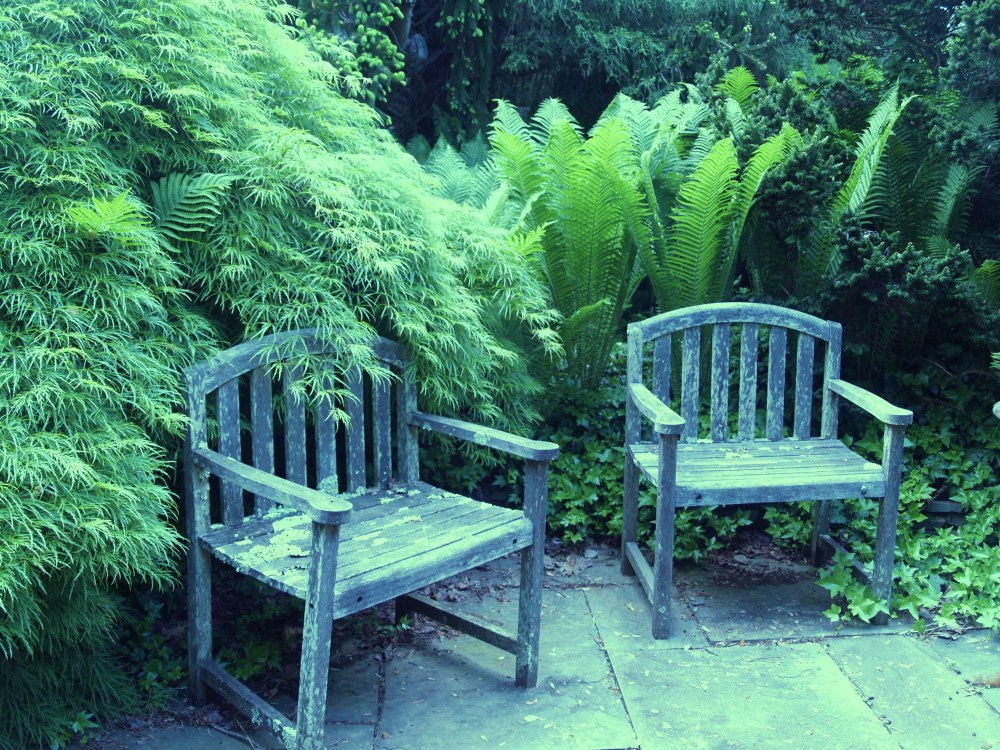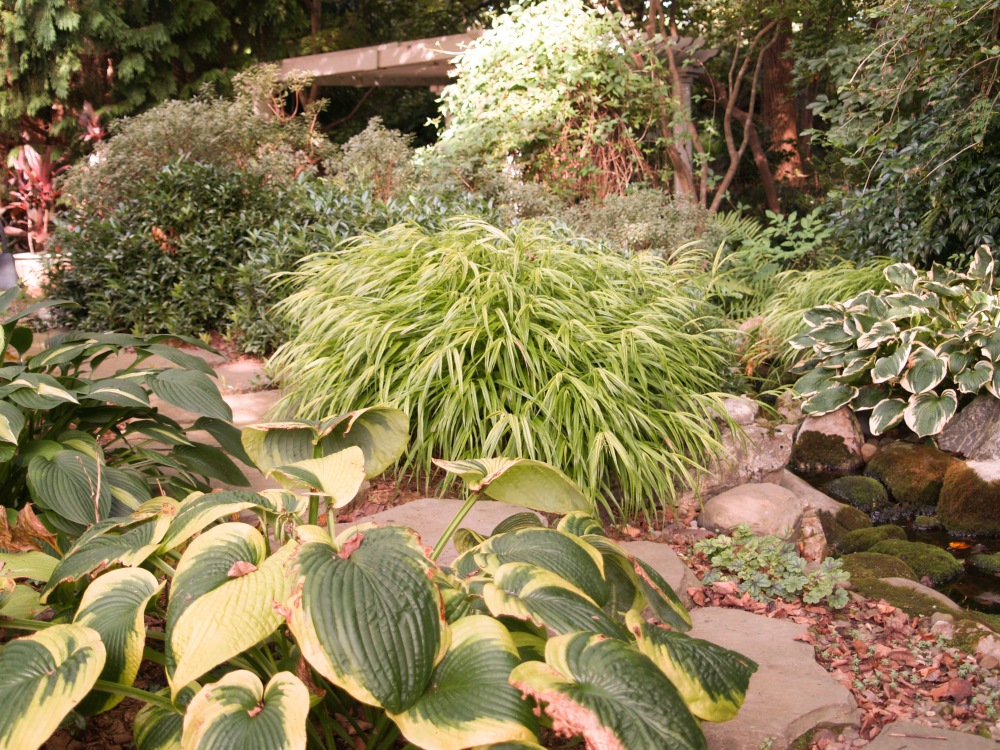Understandably, many gardeners prefer a large measure of order and tidiness in their gardens, even if their shrubs are not pruned into a variety of geometric shapes. Not that I refer to my wife as a gardener, but that’s her preference. She will mostly tolerate wide spreading shrubs and perennials that flop over one another, but let a branch stray over one of the garden’s paths and she commences to hooting and hollering. If I don’t catch her and put a stop to it, she usually heads straight to the garage to grab her pruners to lop off the offender.
I don’t mind that branches grow into a path or patio, and in fact a dwarf spruce has turned a small patio, that was really more what you would call a landing, into a path. The circular bluestone patio was only ten feet across from the start, and of course it’s still ten feet across, but the spruce covers almost half this width at one point. Which is just fine with me. On the far side a green leafed weeping Japanese maple grows at least three feet into the patio. There’s still plenty of space to pass, but not for much else, and if you wanted to perhaps set up a grill, well, there’s not enough room. Anyway, there’s a grill on the deck fifteen feet away, so there’s no need for more space, and what’s the problem with the spruce, or the maple?

Both trees look perfectly fine growing far over into the patio, and either would be ruined if I allowed my wife to butcher them back to the bluestone’s edge. I suppose that someday this will become a problem, since both will continue to grow, but they’ve been there for nearly twenty years, and I expect it will take that long again for it to become a problem. At least, as far as I’m concerned.
From this patio the path leads across two large stone slabs that bridge a section of one of the garden’s ponds, then stone steps lead down to another, larger circular patio. Tall nandinas and occasionally a rose lean into the path, though it’s still easily passable. While the thorns of the rose should be the bigger concern, I often find branches of the nandina in the trash that my wife has chopped while I was looking elsewhere. The tall stems of nandina are prone to leaning when they’re wet, and before I have a chance to object, they’ve been lopped off. And here is the problem. I’m certain that you con’t care at all about my personal problems, but if my wife and I have a disagreement over anything, it’s not about money, or shopping, but why did you prune the nandina without checking with me? I know, everyone should be so lucky.
And, it’s not just shrubs and trees. Hostas are a big offender, and there are hellbores, and sweetbox. Wherever I’ve planted the splendid Japanese Forest grass, there’s no doubt that it will stray over a path. Probably far over, and like the big leafed blue hostas in the side garden, the flopping foliage is often too wide spreading to step over or around, so you must just push through. Long ago, a black snake hung around the garden for a few years, and it was a good bet that you’d find him in the cool shade under one of sieboldiana ‘Elegans’ huge leaves. No harm ever came of it, but the threat of the little guy lurking allowed the hosta to completely obscure the stone path.

Whether the subject is the border of a patio, path, or pond, I prefer that foliage obscure the edges so that there are no obvious lines of paving. Along the border of the garden’s ponds, gravel and boulders must be mostly covered by foliage (or moss). On occasion, this overhanging foliage must be tamed a bit as it becomes too exuberant, and this is where my wife’s obsession is handy.
Years ago, to fill spaces between new shrubs I planted varying types of ivy. Needlepoint and variegated ivies grow more slowly than the typical English ivy, but these are still ivies that will eventually grow over anything in their path. So, regular attention is required to keep the paths to the front and rear entries open, and since no science is required to pruning the vigorous ivies, this is an ideal chore for my wife. If this task were left to me I have little doubt that the paths would be quickly covered over.
In recent years my wife has gone back to work, and currently she’s taking online classes so that she has little time to prowl about creating havoc (or restoring order to hear her tell it). I’ll occasionally catch her roaming with pruners in hand, but beyond the front and back walks the remaining stone paths and patios are pretty much left to me to take care of, or not, as is usually the case.
gorgeous!
I can fully appreciate the conflicting desires of you and your wife, as my wife and I have the same issues in our garden. But I’m more of the opinion that if one puts in an attractive garden walkway, it should stay an attractive garden walkway. So, even though I have some regrets, I take a pruner and trim away garden growth that gets in the way of one walking these paths, mentally grumbling to myself that I should have planted some of these things further away from the path.
Kind of like raising your kids – you want to give them some freedom to express themselves, but not TOO much freedom, or they can cause trouble.
Except for front and back walks, the paths in my garden are functional, a way to get from A to B without soiling my footwear too badly. I’ve never been much concerned with their appearance. When I selected bluestones I picked ones that were most weathered and pockmarked. In fact, I would prefer to have dirt or mulch paths through the garden instead of stone, but my wife insists. I readily admit that this keeps me out of some trouble by limiting the amount of dirt and debris that I drag indoors.
Very lush! I , too, have a garden that has reached that stage where plants are maturing and everything is filled in. I am beginning to second guess a few locations of the maturing landscapes!
There are two issues, overgrown and overflowing. I have bigger worries with overgrown, since this problem often must be remedied with a chainsaw. But, plants grow, and what satisfies the gardener for ten years can become problematic later.
Yes! That redwood was cute 10 years ago but now…..